The Spitfire Mk.IXs featured in the Wings of Glory Airplane Packs present aircraft flown by three big WW2 aces: the Canadian George Beurling, the British Johnnie Johnson and the Polish Stanisław Skalski. In this article, let’s learn something about these pilots - see here the first part of the Mk.IX preview.
George Beurling
The Canada’s greatest fighter pilot and most famous hero in World War II, George Frederik Beurling is also known as "The Falcon of Malta" and the "Knight of Malta." Sent to the island in June 1942, when it was under siege of Germans and Italians, in two months of fighting he became the highest scoring ace of the defensive campaign. In a single 14-day period he shot down 27 enemy planes. Also nicknamed “Buzz” and “Screwball,” he scored a total of 31 victories and 9 enemy aircraft damaged during the war.
Beurling was born in Quebec, in December 1921, and wanted to fly since he was a child. When he was 12, he took command of an airplane for the first time, and five years later he was flying solo. He left school to work for an air freight company and soon gained a commercial license. More than just a pilot, he was also an eager fighter and tried to join the Royal Canadian Air Force just after the outbreak of the war, but was rejected for the lack of academic qualifications. He didn’t give up, and after other trials he was finally accepted by RAF in September 1940. He was qualified as a pilot and awarded wings one year later (due to one or two misdemeanors).
His skill could be seen during training, at RAF Hawarden. There, he came under the influence of the great Ginger Lacey, who later commented about him: "He was a wonderful pilot and an even better shot." During his training, he exerted himself to conquer gunnery, estimation of range, deflection, bullet trail and bullet drop, till flying and shooting became a single action.
He was assigned to the RCAF 403 Squadron in December 1941, serving in Essex. For four months, he escorted bombers and flew fighter sweeps across the English Channel. He was transferred to the 41 Squadron, in Sussex, by late spring. Flying a Spitifire Vb, Beurling scored his first victory on May 1st, 1942, when he destroyed a Focke-Wulf FW 190 over Calais, and two days later he shot down another one. In this occasion, he spotted a lone FW 190, and broke from the flight to pursue it. He was reprimanded for attacking a target without permission, and became unpopular with his superiors and fellow pilots. This led him to volunteer for a posting overseas, which led to the 249 Squadron, in Malta.
He arrived in the island on 9 June, and there he was nicknamed "Screwball," an expletive he had a habit of using. On 12 June, in his first mission in Malta, he was credited with a Bf 109 damaged. Starting on July 6th he claimed a series of kills, reaching ace status in four days, with five confirmed victories. By October 1942, Beurling's score in Malta was 27 enemy aircraft destroyed and 8 damaged – including several German Messerschmitt Bf 109s and Ju 88s, as well Italian Macchi MC.202s, Cant Z1007bis and Reggiane Re.2001.
Although he was the most successful pilot defending Malta, Beurling behavior irritated officers. He broke formation to attack without waiting for orders, and also indulged in stunt flying, which drew reprimands and disapproval. But even so, his bravery granted him many awards: the Distinguished Flying Medal (DFM) in July 1942, and a Bar, in September 1942, , the DFC (Distinguished Flying Cross) in October 1942, and the DSO (Distinguished Service Order) in November 1942.
Beurling was shot down four times over Malta, the last one on 14 October 1942, when he scrambled with six other pilots from his squadron to intercept a raid of Ju 88s escorted by 60 Bf 109s, Macchi 202s, and Reggiane 2001s. Wounded in the heel, elbow and ribs, with his Spitfire set on fire, he managed to bail out into the sea. After his rescue, Beurling was hospitalized and sent back to Britain. On the way, the B-24 transport aircraft he was aboard crashed into the sea off Gibraltar and Beurling was one of only three survivors. He swam the distance to shore despite his combat injuries and new injuries from the crash itself.
In November, he was sent to Canada to join a Victory Loan Drive, but he was not suited for a war bond campaign, and often said things that embarrassed the RCAF, such as the fact he enjoyed killing people. He returned to Britain in mid-1943 and was transferred to the Royal Canadian Air Force in September, posted to the No.403 Squadron, at Kenley. Flying the Spitfire Mk.IX he scored his last two victories. He shot down a FW 190 on September 24th (with the Mk.IX MA585, featured in the Wings of Glory Airplane Pack), and another one on December 30th – when he was assigned to the No.412 Squadron.
His behavior continued to cause disciplinary problems with commanders. At No.403 Squadron he was threatened with court martial, and at No.412 he came into conflict with his commander for stunting and his lack of teamwork. Beurling returned to Canada in April 1944, his wartime service terminated prior to war's end. He ended his career as a Squadron Leader with 31 individual and one shared confirmed kills, nine claimed damaged.
Not adapted to the civilian life, he decided to continue combat flying in the postwar era. In 1948, he was recruited to fly P-51 Mustangs for the Israeli Air Force, but he fatally crashed his Noorduyn Norseman transport aircraft while landing at Aeroporto dell'Urbe in Rome. The aircraft inexplicably failed just after take-off. Trying to make it back to the runway, they crashed short and the fully fueled airplane exploded in a fireball. Many thought it was sabotage, although the cause was never firmly established as the aircraft (and the pilots) were burned beyond recognition. The Italian military honored him with a proper military funeral fit for a hero, even if he had fought for the opposing side during the Malta campaign. His remains were stored for three months in a cemetery warehouse before his widow ordered that he be buried there. Two years later they were claimed by Isreaeli Air Force, and moved to Mount Carmel Cemetery in Israel.
In 1943, Beurling published and an account of his time in Malta – “Malta Spitfire: The Diary of a Fighter Pilot”, co-written by Leslie Roberts.
Johnnie Johnson
James Edgar Johnson was the highest scoring RAF fighter pilot to survive the World War II, with 38 credited victories. Born at Melton Mowbray in March 1915, he grew up in East Midlands and graduated as a civil engineer, but his interest in aviation led him to join the RAF. Initially rejected for a collarbone injury he had suffered playing rugby, he wasn't daunted and was admitted into the Royal Air Force Volunteer Reserve when the tensions with Germany had increased and the entry standards were reduced.
In August 1939, after a basic training, he was called up and sent to Cambridge for flight training. He first flew solo on 20 February 1940, in a Tiger Moth N6635. He completed his training at RAF Hawarden, in Wales, by August 1940, and was inducted into the General Duties Branch of the RAF as a Pilot Officer.
During training, Johnson found that his shoulder caused him great pain while flying, specially when flying high-performance aircraft such as the Supermarine Spitfire. Briefly posted to No. 19 Squadron, he soon transferred to No. 616 Squadron at Coltishall. After trying various types of padding on his shoulder, Johnson decided to undergoing surgery to reset his collar bone. He returned to No. 616 Squadron in December 1940, too late to participate in the Battle of Britain.
In early 1941, the 616 flew on fighter sweeps over France as part of Tangmere Wing, under the command of Douglas Bader. Johnson frequently flew No2 to the wing leader, and learned a lot from the old master of fighter tactics. He achieved his first victories on June 26, 1941, when he shot down a Messerchimitt Bf.109. It was first of a long series: he scored another six confirmed and two probable destroyed, plus two damaged, by September, flying the Spitfire IIAs and VBs. By that time, Johnson received the Distinguished Flying Cross (DFC) and became flight commander.
In the winter 1941, the Germans had introduced the Focke-Wulf FW 190, which was faster at all altitudes, highly maneuverable, and better armed than the Spitfire Vs, and the British squadrons had difficulties fighting them. Johnson claimed a damaged FW 190 on 15 April 1942, but the German fighters got the better of the British pilots consistently throughout most of 1942. Johnson earned a bar for his DFC in June 1942 and was promoted to the rank of Squadron Leader in July.
In August, he was given command of 610 Squadron, and shot down a FW 190 during Operation Jubilee. In March 1943 he was promoted to Wing Commander and given command of the Canadian Wing at Kenley. Despite being an Englishman, Johnson quickly gained the Canadians' trust through his leadership in the air. The unit proved exceptionally effective under his guidance. He personally downed fourteen German fighters between April and September, flying the Spitfire Mk.IX – 12 of them with the EN398. Johnson received the Distinguish Service Order (DSO) in June 1943, and a bar for the DSO that September.
With 25 kills scored, he was removed from flight operations for six months at the end of September, performing administrative duties at No. 11 Group Headquarters, until March 1944, when he was given command of No. 144 (RCAF) Wing. Scoring his 28th kill on May 5, he became the highest-scoring British ace still actively flying. He continued adding to his tally, flying the Spitfire Mk.IX – mostly in the MK392 presented in Wings of Glory. In August, he took command of No. 127 Wing, and he scored his last two victories in WW2 leading this unit.
During the course of the war, Johnson flew 515 sorties and shot down 34 German aircraft. He shared in seven additional kills which added 3.5 to his total. In addition, he had three probables, ten damaged, and one destroyed on the ground. Johnson continued his career in the RAF after the war and served in the Korean War. He eventually retired in 1966, with the rank of Air Vice Marshal and died in 2001, aged 85.
Stanislaw Skalski
Stanislaw Skalski was the top Polish ace of WW2, credited with 22 enemy aircraft destroyed. Born in October 1915, at Kodyma, near Odessa, he was sent to Zbaraz with his mother after the Russian Revolution (1917). He started to fly in 1934, with gliders, and in 1935 he qualified for aircraft. In 1936, he decided to become a military pilot and was graduated as an officer in October 1938.
Skalski joined No.142 Eskadra, the “Flying Ducks,” in Torun, flying PZL fighters. His squadron went into action just after the German invasion of Poland, on September 1st, 1939. That day he downed a German Hs 126 reconnaissance aircraft, scoring his first victory, and in five days he had destroyed another four German bombers. Following the collapse of Polish resistance, he escaped to Romania with the remnants of his squadron, reaching England and receiving a commission in the RAF.
He joined No 501 Squadron in August 1940, taking part to the Battle of Britain and shooting down six German planes. In March 1941, Skalski was posted to No 306 (Torun) Polish squadron flying Spitfires, claiming other five victories on sweeps over northern France that summer. In March 1st, 1942, he was assigned to No 316 Squadron as flight commander and less than two months later was promoted to squadron leader and given command of No 317 Squadron. He led the unit during the combined operations at Dieppe, where his pilots destroyed seven German aircraft.
From November 1942 to October 1943, he acted an instructor with No. 58 Operation Training Unit. Then, he was given command of the Polish Fighting Team (PFT), also called "Cyrk Skalskiego" (Skalski's Circus) - a Special Flight consisting of fifteen experienced Polish fighter pilot volunteers. By March 1943, attached to 145 Squadron, they took part in actions in Tripolitania and in Sicily. The call code of 145 Squadron was "ZX" and the aircraft of the Polish Flight received individual code numbers "1" to "9." In this campaign, Skalski flew the Spitfire Mk.IXc EN315 (ZX 6), presented in Wings of Glory, in important missions, scoring four aircraft destroyed.
Afterward, he became the first Pole to command a RAF Squadron, the No.601. He took part in the invasion of Sicily and Italy, ultimately commanding No.131 Polish Fighter Wing and No.133 Polish Fighter Wing flying the Mustang Mk III. On 24 June 1944, Skalski scored two air victories over Rouen.
After the war, in 1947, he returned to Poland and joined the Air Force of the Polish Army, but one year later he was arrested by the communist regime under the false charge of espionage. Sentenced to death, he spent three years awaiting the execution, but his sentence was commuted to life imprisonment in Wronki Prison. He was released in 1956, after the end of Stalinism in Poland, and allowed to join the military, serving in the Headquarters of the Polish Air Force and retiring in 1972. In 1988 he was promoted to the rank of Brigadier General and died in November, 2004.
Information sources: Wikipedia (G.Beurling, J.Johnson, S.Skalski), Aces of WW2, Historic Wings, Canadian Air Aces and Heroes, “Malta Spitfire: The Diary of a Fighter Pilot” - George Beurling and Leslie Roberts (Greenhill Books, 2002), Military Story, Century of Flight, WWII Ace Stories, The Telegraph, Military.com – Interview with Skalski.

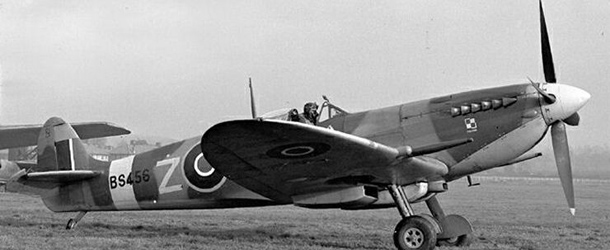
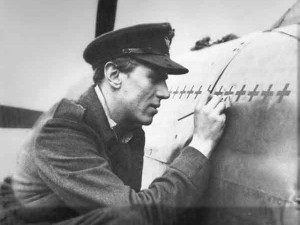
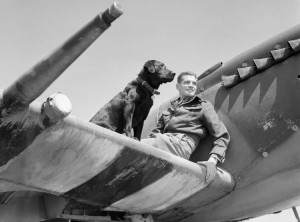
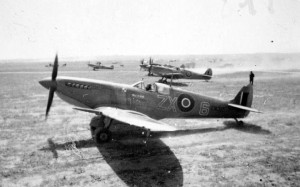


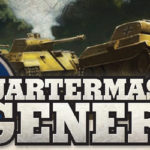




Follow Us on